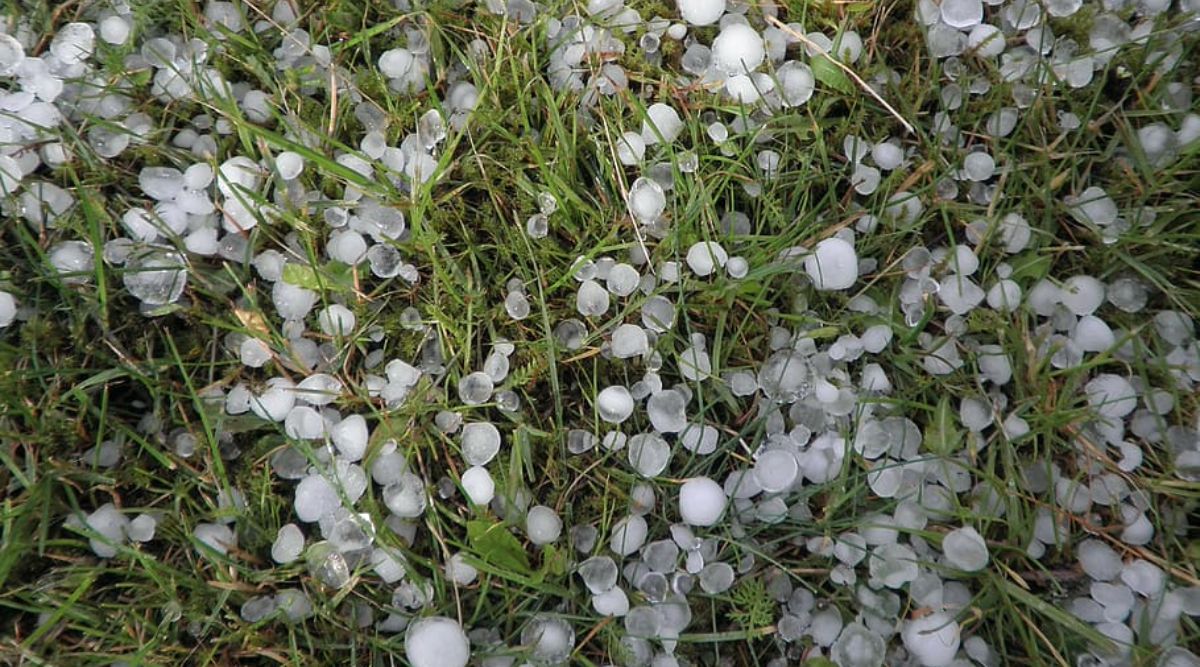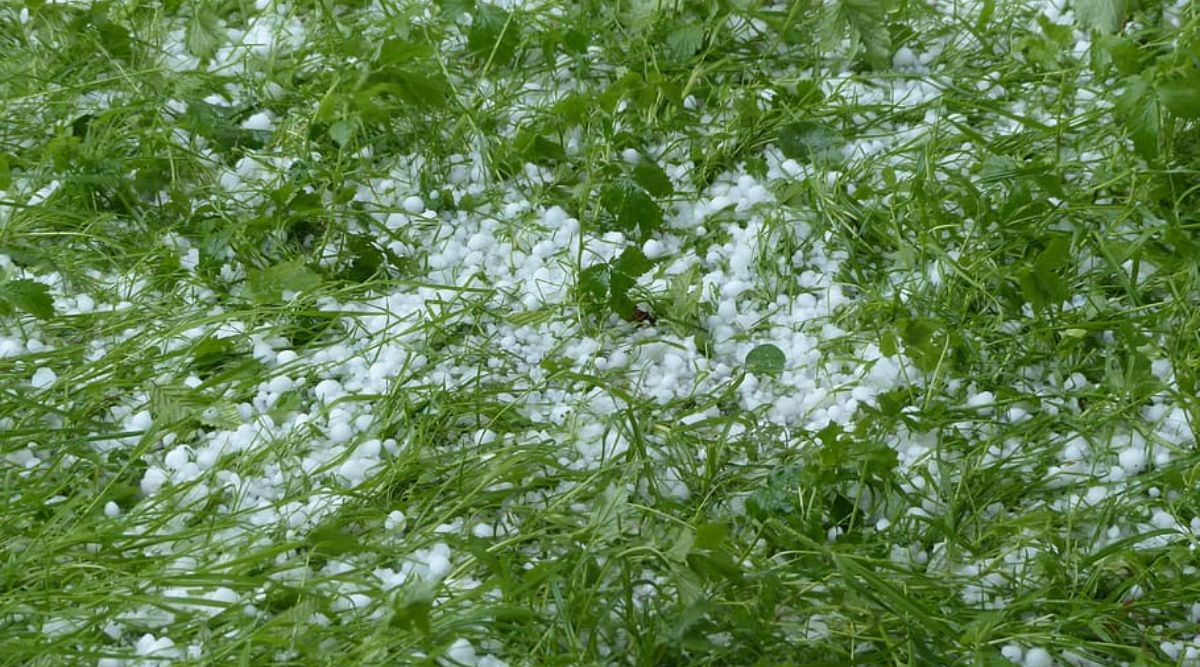Hailstorms hurt the farmers of Madhya Pradesh
Climate change is the culprit of loss caused to the farmers this time. Meteorological department expert confirms that the duration of rains and hailstorms has increased from average three days in a year to six to eight days this year
Hailstorms have become a recurring problem for farmers in Madhya Pradesh. It usually occurs during the months of February to April, which is the peak cropping season for farmers in the state. The sudden onset of hailstorms damages crops, including wheat, gram, and mustard, among others, which results in heavy losses for farmers. The impact is so severe that it damages the entire crop, causing a total loss of the harvest. These storms can shred crops in minutes, resulting in significant financial losses.
Jairam Gaikwad, a farmer from Baitul district in Madhya Pradesh, in conversation with Kisan of India team, feels lucky that the recent hailstorms in the state has not caused much havoc to his fields and produce. But off course he is worried about the returns. He clearly states “Although the hailstorms did not cause much direct harm to the crops but the quality of crops have been affected. The profit margins are going to go down this year which will ultimately lead to financial loss.” He is also concerned about his fellow farmers in nearby districts as they had to suffer huge loss.

The most affected regions are the central and northern parts of the state, where farmers are heavily dependent on agriculture for their livelihood. These regions are known for their high productivity and are considered the breadbasket of the state. The Shahdol-Pandaria state highway was covered with hail as big as the size of a plum, affecting the movement of traffic. Farmlands adjacent to the state highway were covered with hail. Several areas in Madhya Pradesh’s Khargone also witnessed heavy hailstorms that caused damage to crops. In Jhirniya and Bhagwanpura tehsil of Khargone, unseasonal rain caused huge damage to the produce.
Also Read: Soil Nutrients: How soil become a treasure of nutrients?
Government Intervention
The problem has become so severe that it prompted the government to declare these hailstorms as natural calamities. The state government has attempted to compensate farmers by providing them with subsidies, loans, and other financial assistance. However, these measures have not solved the problem entirely.
The government needs to create a comprehensive plan to mitigate the damage caused by hailstorms. This would involve educating farmers on the importance of crop insurance, cloud seeding, and other such measures that could reduce the impact of hailstorms. It would also be necessary to develop an early warning system to alert farmers of impending hailstorms and enable them to take preventive measures.

Government also needs to improve the infrastructure in rural areas and invest in modern technology to improve the resilience of crops against extreme weather events like hailstorms. The state should also focus on increasing the production of crops that are resilient to hailstorms and can provide an alternative source of income to farmers.
Investing in new technology and agricultural practices that can better withstand hailstorm damage would be a good start. However, the government must take a more active role in supporting farmers affected by hailstorms. Without this, the agriculture industry in Madhya Pradesh will continue to suffer, leaving farmers in financial ruin.
Why Hailstorms in Madhya Pradesh ?
The state of Madhya Pradesh in India has been experiencing an increase in hailstorms in recent years. They are weather phenomena that are characterized by pellets of ice that fall from the sky. These pellets can range in size from small peas to large grapefruits and are often accompanied by thunderstorms and strong winds.
The reason behind the increase in hailstorms in Madhya Pradesh is due to a combination of factors, including climate change and the geographical location of the state. The state is located in the central part of India, which is known for its hilly terrain and high altitude. These factors create the perfect conditions for hailstorms to form, as the lower temperatures at higher altitudes cause water droplets to freeze into ice pellets. Additionally, the state is prone to thunderstorms, which can contribute to the formation of hailstorms.
Also Read: Bio-Pesticides: No alternative to organic pesticides if agriculture is to be saved from waste.
In recent years, the state has been experiencing more extreme weather conditions. Rising temperatures, changes in rainfall patterns, and erratic weather conditions are all contributing to the increase in hailstorms in the state. The frequency of hailstorms is also increasing due to climate change and farmers are facing an uncertain future. The erratic weather patterns have made it difficult for farmers to predict the weather and adapt their farming practices accordingly. Additionally, hailstorms have created a sense of constant fear among the farming community, who are unsure if their hard work will pay off. Mitigating the impact of hailstorms will require efforts to reduce the effects of climate change and to develop strategies to protect crops and livelihoods in the region.

What are Hailstorms ?
Hailstorms are a natural disaster that can be very destructive. They are formed when a cumulonimbus cloud rises up to high altitudes, where the temperatures are below freezing. Within these clouds, water droplets freeze and form ice pellets, which become too heavy to remain in the cloud and fall to the ground as hail. Hailstones can range in size from small pellets to the size of a golf ball or even bigger.
Apart from damaging crops, hailstorms also cause damage to property, including houses, buildings, and vehicles. The heavy rainfall that accompanies hailstorms often leads to flooding and water logging, which worsens the situation for people living in low-lying areas.
Also Read: Climate Change is the most serious problem in agriculture. How to overcome it?
Contact us – If farmers want to share any valuable information or experiences related to farming, they can connect with us via phone or whatsapp at 9599273766 or you can write to us at “[email protected]”. Through Kisan of India, we will convey your message to the people, because we believe that if the farmers are advanced then the country is happy.
You can connect with Kisan of India on Facebook, Twitter, and Whatsapp and Subscribe to our YouTube channel.



